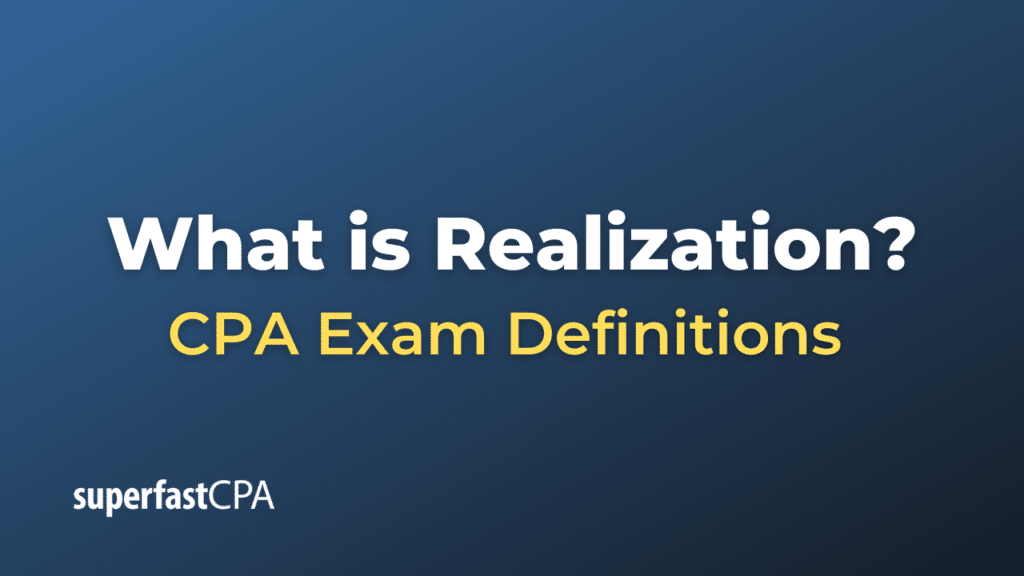Realization
In accounting and finance, “realization” is a concept that pertains to the point at which revenue (or income) is considered to be recognized and earned, regardless of when the payment is received. It’s an integral principle in accrual accounting, where revenue and expenses are recorded when they are earned or incurred, not necessarily when cash changes hands.
The realization principle dictates that revenue should only be realized when:
- Goods have been delivered or services have been rendered.
- There is a reasonable certainty regarding the collection of the payment.
For instance, if a company sells a product on credit, the revenue from that sale is realized and recognized at the time of the sale (when the product is delivered), not when the payment is eventually received.
Here are a couple of examples to illustrate the realization concept:
- Product Sale on Credit: Suppose a furniture store sells a sofa set to a customer on credit for $1,000. The store delivers the sofa set immediately, but the customer is given a 30-day period to pay. According to the realization principle, the store would recognize the $1,000 in revenue at the time of the sale and delivery, not 30 days later when the money is received.
- Service Rendered: An architect completes a design project for a client and sends an invoice, payable within two weeks. Even if the client pays after a week, the architect recognizes the revenue at the time the service (design project) was completed and the invoice was sent.
It’s important to understand the distinction between realization and actual cash receipt in accrual accounting. While the realization principle helps businesses recognize revenue accurately in their financial statements, it doesn’t necessarily reflect the cash flow during a particular period. That’s where the cash flow statement, another financial statement, becomes vital to understand the inflow and outflow of cash within a business.
Example of Realization
Let’s explore the realization concept with a more detailed example:
Imagine “TechGiant Corp.,” a company that manufactures and sells high-end electronic devices. On June 15, 2023, TechGiant Corp. enters into a contract with “RetailHub Stores” to deliver 1,000 units of its latest smartphone model. RetailHub Stores agrees to pay $500 per unit, leading to a total contract value of $500,000. The terms of the sale dictate that RetailHub Stores will pay the amount in 60 days after delivery.
On June 20, 2023, TechGiant Corp. delivers the smartphones as per the contract.
Realization in Action:
- June 15, 2023: The contract is signed, but no revenue is realized or recognized yet because the smartphones have not been delivered.
- June 20, 2023: TechGiant Corp. delivers the 1,000 smartphones to RetailHub Stores. At this point, the criteria for realization are met:
- The goods (smartphones) have been delivered.
- There’s a reasonable certainty of payment since RetailHub Stores is a reputable company, and the agreed-upon payment terms are 60 days.
- August 19, 2023 (60 days later): RetailHub Stores makes the payment of $500,000. At this point, TechGiant Corp. receives the cash, but this doesn’t affect the income statement because the revenue was already recognized back in June. Instead, on the balance sheet, there’s a shift from “Accounts Receivable” (an asset account) to “Cash.
This example illustrates the essence of the realization principle in accrual accounting. The actual cash receipt (on August 19) is separate from the recognition of revenue (on June 20). The revenue is recognized when it’s realized, i.e., when the goods are delivered, and there’s a reasonable expectation of payment, not necessarily when the money hits the bank account.













